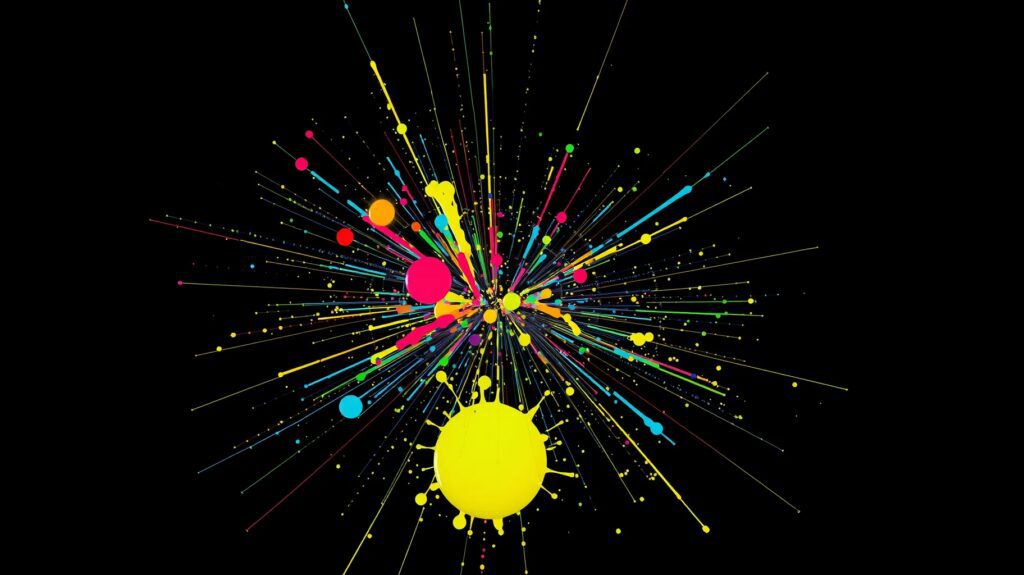
Mastering High-Resolution Perception:
In the rapidly evolving landscape of multimodal AI, LLaVA-UHD (Large Language and Vision Assistant with Ultra-High Definition capabilities) represents a groundbreaking development. This innovative approach enables large multimodal models (LMMs) to efficiently process and understand high-resolution images in any aspect ratio, addressing the limitations of previous models like LLaVA-1.5 and GPT-4V. These traditional models struggled with visual encoding strategies, leading to inefficiencies and inaccuracies. LLaVA-UHD overcomes these challenges with novel methodologies, enhancing the capability and efficiency of AI models.
The Challenge of High-Resolution Perception
Vision-language models have traditionally compromised on image quality by using fixed low resolutions, such as 224×224 pixels. This leads to issues like distortion, blurriness, and loss of detail, which significantly hamper the model’s ability to comprehend fine-grained visual information. In real-world applications, images come in diverse shapes and sizes, necessitating a flexible approach to visual encoding. LLaVA-UHD addresses this by preserving the native aspect ratio and high resolution of images, enabling models to perceive and interpret them with unprecedented clarity.
Key Innovations in LLaVA-UHD
LLaVA-UHD introduces three pivotal components that set it apart from its predecessors:
- Image Modularization Strategy
- Concept: This strategy involves dividing high-resolution images into smaller, variable-sized slices. This modular approach allows the model to process each slice efficiently without distorting the image’s original aspect ratio.
- Benefits: By avoiding the computational waste associated with padding and resizing, this method ensures that each slice retains its original detail and context, enhancing the overall accuracy of the visual encoding process.
- Compression Module
- Concept: The compression module condenses the visual tokens generated by the vision encoder. This reduction in data volume decreases the computational load on the language model, making the processing of high-resolution images more efficient.
- Benefits: This compression not only speeds up the processing time but also maintains the integrity of the visual information, allowing for a more detailed and accurate analysis of the images.
- Spatial Schema
- Concept: The spatial schema organizes the compressed slices, maintaining their spatial context. This helps the large language model understand the layout and structure of the image, facilitating better interpretation and analysis.
- Benefits: This component is crucial for tasks that require spatial awareness, such as object detection and scene understanding, as it ensures that the model can accurately map and analyze the spatial relationships within an image.
Detailed Performance Analysis
The effectiveness of LLaVA-UHD has been demonstrated through extensive testing on multiple benchmarks. It outperforms existing models, achieving notable improvements in tasks such as visual question answering and optical character recognition (OCR). For instance, in the TextVQA benchmark, LLaVA-UHD achieved a 6.4-point accuracy improvement over previous models. This was accomplished while using only 94% of the computational resources required by its predecessors, supporting images up to 672×1088 pixels.
Modularized Visual Encoding
A critical innovation in LLaVA-UHD is its modularized visual encoding strategy. Traditional models interpolate the position embeddings of the Vision Transformer (ViT) to fit the target shape, often resulting in high computational costs and out-of-distribution issues. LLaVA-UHD avoids this by dividing native resolution images into smaller slices that align closely with the model’s pre-training settings. This modular approach allows the model to maintain high efficiency and accuracy without the need for shape-distorting resizing or padding.
Compression Module
To manage the large volume of data from high-resolution images, LLaVA-UHD employs a sophisticated compression module. This module condenses the visual tokens produced by the vision encoder, significantly reducing the computational load on the language model. By compressing these tokens, the model can process detailed images more swiftly and accurately, maintaining the essential visual information needed for precise interpretation.
Spatial Schema
The spatial schema in LLaVA-UHD organizes the compressed image slices into a coherent structure that the large language model can easily interpret. This organization preserves the spatial relationships within the image, enabling the model to perform tasks that require detailed spatial understanding, such as object detection and scene analysis. This schema ensures that the model can accurately interpret complex visual scenes by maintaining the contextual integrity of the image slices.
Future Directions and Implications
While LLaVA-UHD marks a significant advancement, the journey towards true visual intelligence continues. Future developments aim to enhance the model’s capabilities further, enabling it to handle even higher resolutions and more complex tasks, such as detailed object detection and scene understanding.
Researchers are exploring ways to improve the adaptive and efficient visual encoding methods used by LLaVA-UHD. The goal is to develop models that can seamlessly integrate high-resolution visual data with textual information, mimicking the way humans perceive and interpret the world.
Frequently Asked Questions about LLaVA-UHD
What is LLaVA-UHD?
LLaVA-UHD (Large Language and Vision Assistant with Ultra-High Definition capabilities) is a cutting-edge multimodal AI model designed to efficiently process and understand high-resolution images in any aspect ratio. It addresses the limitations of earlier models like LLaVA-1.5 and GPT-4V by introducing innovative visual encoding strategies that enhance accuracy and efficiency.
How does LLaVA-UHD differ from previous models like LLaVA-1.5 and GPT-4V?
LLaVA-UHD introduces several key innovations:
- Image Modularization Strategy: This method divides high-resolution images into smaller, variable-sized slices, preserving the original aspect ratio and detail.
- Compression Module: This module condenses visual tokens to reduce computational load while maintaining visual information integrity.
- Spatial Schema: Organizes compressed slices to preserve spatial context, aiding in tasks requiring detailed spatial understanding, like object detection.
These innovations address the inefficiencies and inaccuracies found in previous models, allowing LLaVA-UHD to process high-resolution images more effectively.
Why is high-resolution perception important in multimodal AI?
High-resolution perception is crucial because real-world images come in various shapes and sizes. Traditional models using fixed low resolutions can lead to distortion, blurriness, and loss of detail, which hampers the model’s ability to understand fine-grained visual information. LLaVA-UHD preserves the native aspect ratio and high resolution of images, enabling models to interpret them with greater clarity and accuracy.
What are the main components of LLaVA-UHD?
LLaVA-UHD consists of three main components:
- Image Modularization Strategy: Divides high-resolution images into smaller, variable-sized slices.
- Compression Module: Condenses visual tokens to reduce computational load.
- Spatial Schema: Organizes compressed slices to maintain spatial context.
These components work together to improve the model’s ability to process and understand high-resolution images efficiently.
How does the compression module work?
The compression module in LLaVA-UHD condenses the visual tokens generated by the vision encoder. This process reduces the volume of data that the language model needs to process, making the handling of high-resolution images more efficient while retaining essential visual information for accurate analysis.
What performance improvements does LLaVA-UHD offer?
LLaVA-UHD has shown significant improvements across various benchmarks, such as visual question answering and optical character recognition (OCR). For instance, in the TextVQA benchmark, LLaVA-UHD achieved a 6.4-point accuracy improvement over previous models, all while using only 94% of the computational resources required by its predecessors and supporting images up to 672×1088 pixels.
What future developments are anticipated for LLaVA-UHD?
Future developments aim to enhance LLaVA-UHD’s capabilities in handling even higher resolutions and more complex tasks, such as detailed object detection and scene understanding. Researchers are working on improving the adaptive and efficient visual encoding methods to enable seamless integration of high-resolution visual data with textual information.
How can LLaVA-UHD benefit real-world applications?
LLaVA-UHD’s ability to process high-resolution images accurately and efficiently can benefit various real-world applications, including:
- Visual Question Answering: Improved accuracy in interpreting and answering questions based on visual data.
- Optical Character Recognition (OCR): Enhanced ability to recognize and interpret text in images.
- Object Detection and Scene Analysis: Better understanding of spatial relationships and details within images, aiding in tasks like autonomous driving, surveillance, and medical imaging.
How does the image modularization strategy work?
The image modularization strategy in LLaVA-UHD divides high-resolution images into smaller, variable-sized slices. This approach ensures that the slices are close to the standard pre-training settings of the vision transformer, avoiding the need for padding and resizing, which can distort images. By processing these smaller slices, the model retains the detailed information and context of the original image, enhancing accuracy.
What are the potential applications of LLaVA-UHD in industry?
LLaVA-UHD can revolutionize various industries by providing advanced image processing capabilities:
- Healthcare: Enhanced medical imaging analysis, leading to better diagnosis and treatment planning.
- Autonomous Vehicles: Improved object detection and scene understanding, enhancing the safety and efficiency of autonomous driving systems.
- Surveillance: More accurate identification and tracking of objects in security footage, improving public safety.
- Retail: Better visual search and inventory management through precise image recognition.
What are the limitations of LLaVA-UHD?
While LLaVA-UHD offers significant advancements, it also faces challenges:
- Computational Resources: Despite its efficiency, processing high-resolution images still requires substantial computational power.
- Data Requirements: High-quality training data is essential to maintain the model’s accuracy and effectiveness.
- Adaptation to New Tasks: Continuous updates and fine-tuning are needed to adapt the model to new tasks and environments.
How does LLaVA-UHD handle varying aspect ratios?
LLaVA-UHD handles varying aspect ratios by modularizing images into smaller slices that maintain their native aspect ratio. This prevents the distortion that occurs with traditional resizing methods, allowing the model to process images in their original form. The spatial schema then organizes these slices to preserve the overall structure and context, enabling accurate interpretation of images with diverse aspect ratios.
How does LLaVA-UHD improve OCR performance?
LLaVA-UHD improves Optical Character Recognition (OCR) performance by preserving fine details in high-resolution images. The compression module reduces the computational load while maintaining visual information integrity, allowing the model to accurately recognize and interpret text in images. This leads to higher accuracy in OCR tasks, particularly in complex and detailed documents.
Can LLaVA-UHD be integrated with existing AI systems?
Yes, LLaVA-UHD can be integrated with existing AI systems to enhance their visual processing capabilities. By incorporating LLaVA-UHD, systems can benefit from improved high-resolution image analysis, leading to better performance in tasks such as visual question answering, object detection, and scene understanding. Integration may require adjustments to accommodate the model’s processing requirements and ensure seamless operation within the existing infrastructure.
How does LLaVA-UHD maintain efficiency while handling high-resolution images?
LLaVA-UHD maintains efficiency through its innovative components:
- The image modularization strategy ensures that high-resolution images are divided into manageable slices.
- The compression module reduces the data volume, lowering the computational load.
- The spatial schema organizes the slices effectively, preserving spatial context and ensuring accurate interpretation.
These strategies enable LLaVA-UHD to process high-resolution images efficiently without sacrificing detail or accuracy.
Conclusion
LLaVA-UHD represents a transformative step in the field of multimodal AI, addressing the limitations of previous models and setting new standards for high-resolution visual perception. By integrating innovative strategies such as image modularization, compression, and spatial schema, LLaVA-UHD enhances the accuracy and efficiency of large language models, paving the way for more advanced and capable AI systems.
Sources:





